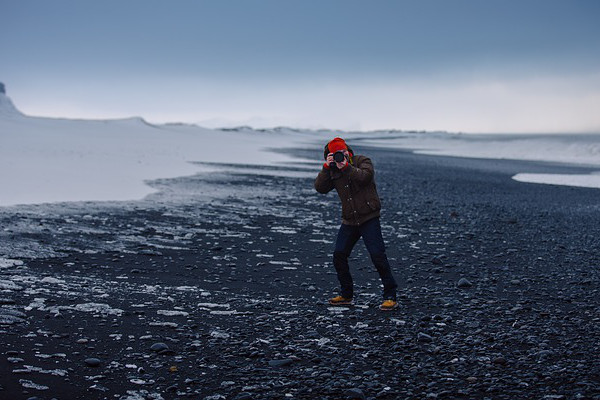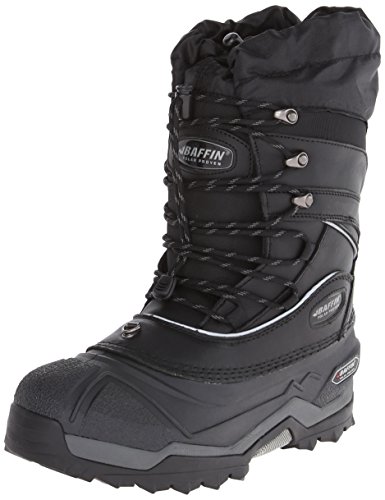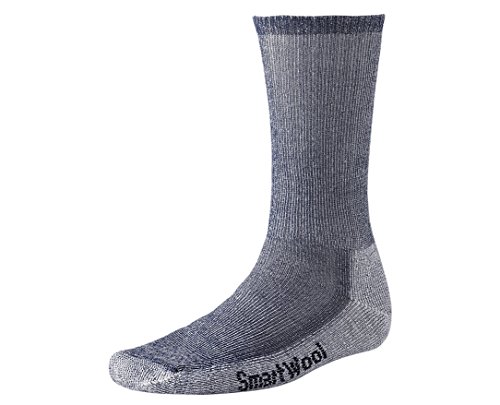Antarctica Footwear

The Antarctica footwear you take on your trip is very important.
In this detailed article we discuss the key characteristics to look for in a pair of Antarctica boots and thermal socks, as well as provide our own personal recommendations.
The first key point to note is that standard hiking boots are not suitable for Antarctic conditions. You will need to purchase specific cold weather Antarctica footwear, often called Bunny boots or Mukluks. The second key point is that most Antarctic operators will provide you with the necessary footwear for shore landings. You should only need to bring your standard footwear to wear around the ship if this is the case. However, some guests still prefer to bring their own boots to make sure they get the perfect fit.
Proper Antarctica footwear will have very thick rubber or synthetic soles, a good layer of insulation (often removable), soft uppers and thick insulated insoles to prevent heat loss from the underfoot snow and ice. Your Antarctica footwear should have a solid and quick lacing system with flexible uppers that allow you to get the boots on whilst wearing several pairs of socks.
A key point here is that you don’t want your boots to be too tight as it’s the trapped air between layers that actually creates the warmth.
Your Antarctica footwear should be quite versatile, not cumbersome, as you’ll be wearing these on ice, snow rock and sand. Your boots will also be fine for any cold and rugged climate, not just Antarctica.
For a standard Antarctica trip you won’t need anything specialist, however, if you plan on doing an activity like climbing, then you’ll need a specific cold weather climbing boot.
Key characteristics to look out for in your Antarctica footwear
Sole
Antarctica is a wild wilderness and there are certainly no paved paths. Underfoot will be rugged. Depending on your trip itinerary, you could be walking on ice, snow, rock, mud, sand and grass. Therefore, a good sole on your boot is vital. The best soles have a high rubber count, however, synthetic soles are getting better. Make sure your soles have deep lugs for better grip and traction. Keep in mind though that the thicker the sole the more heavy your boot will be.
Weatherproof
No one wants wet feet on their walk, especially in Antarctica where this can be potentially dangerous. Luckily, water and wind resistant boots are pretty standard these days, but always make sure. GoreTex is usually a great waterproof material.
Fit
Getting the right fit is key. Blisters are an all to common affair, as are people who have not factored in sock thickness and find their boots constricting. Temperatures in Antarctica often drop below freezing and you’ll need to wear tow pairs of socks – one pair of thin under socks and one pair of thermal outer socks. Therefore, your boot fit will need to accommodate this.
When purchasing your Antarctica footwear, a good little tip is to push your toes to the front of the boots as far as they can go, if you fit your index finger down between your heel and boot then that is a good approximation. This is of course whilst wearing two pairs of socks.
Luckily, boots have moved on since the good old days and you don’t have to ‘wear’ them in for months before your journey. However, it is still critical that you give them a good going round before you turn up on your trip .Do not put your bots on for the first time whilst on your boat! All boots will take differing amount of time to ‘break-in’, this will usually depend more upon your feet shape than the boot itself.
Quality
This is an important characteristic when choosing your Antarctica footwear and takes into account much of what is mentioned above. Good quality does not necessarily mean the most expensive, often the price of quality only goes so far before you start paying for the name.
Firstly, good quality boots will have great ankle support. Particularly important in slippery conditions. As noted above, you’ll want a high rubber content in your soles, a durable and flexible lacing system and a quality waterproofing material like GoreTex.
Our Antarctica Footwear Recommendations
For good quality Antarctica footwear, we recommend the following.

The most popular boot for Antarctica travel is generally Bogs Classic High Waterproof boot. This boot is comfortable, warm and protects your legs on those wet zodiac landings that are all too frequent on your trip. However, these boots should only be worn in summer in the Peninsula region of Antarctica. They have a warm rating of up to -4 degrees Celsius.
If you feel the cold more than others, or if you’re thinking of tackling Antarctica in the colder months, then the best option is the Baffin Snow Monster all-weather boot. The Sorel Glacier Extreme Snow boot is also a great option. Both boots have a warm rating of up to -50 degrees Celsius. Please avoid trekking boots as your legs will get wet on zodiac landings if you are wearing them.
When on-board your ship, you can pretty much wear any footwear you want – even sandals!
Socks

Socks are almost as important as your boots. Depending on your boots, you’ll want to play around a little with what size socks fit really well with your boots on. Constricting can occur, especially when you’re wearing two pairs of socks. On-board your cruise you’ll be fine with just a medium weight sock, however, on your landings you’ll want to double up with your socks. Ideally, this means wearing one thin pair of comfortable liner socks underneath an outer thermal pair of hiking socks.
Make sure your thermal socks are seamless and made of a good quality wicking material. Avoid cotton like the plague! Some brands will cushion their socks, this a personal preference. Ragg Wool is definitely the best thermal sock material. For liner socks a good material is also polypropylene as it is very good for wicking moisture. We recommend purchasing at least 4 pairs of thermal socks and several liner socks on top of your standard socks. A great thermal sock is made by SmartWool. For liner socks we would recommend Bridgedale Coolmax Liners.
Antarctica Gear List Continued
Antarctica Clothing – From fleeces, to parkas and shell jackets.
Headgear and Gloves – Gear to keep your head and hands warm, as well as recommendations on Antarctica headlamps.
Bags and Daypacks – From the Antarctica kit bag to your general day-pack.
Other important accessories – Useful other Antarctica accessories
FAQ
If you would like to know more about Antarctica footwear please leave a comment below and we will endeavor to get back to you within 24 hours! Alternatively, please see our FAQ page here. If you would like to get a cruise quote, please use this form.
Thank you - AntarcticaGuide Team
Tags: Antarctica footwear, Antarctica shoes, Antarctica boots, Antarctica socks, Antarctica thermal boots

L Armstrong says
6 years ago
Burnham Arlidge says
6 years ago
Stephanie says
5 years ago
Burnham Arlidge says
5 years ago
Anna Mergele says
6 years ago
Burnham Arlidge says
6 years ago
Caroline R Conver says
5 years ago
Burnham Arlidge says
5 years ago
Pritsana Wannasa says
5 years ago
Burnham Arlidge says
5 years ago
Andrew says
5 years ago
Shubham says
6 years ago
Kathryn Royal says
5 years ago
Burnham Arlidge says
5 years ago
Mary Fernando says
5 years ago
Burnham Arlidge says
5 years ago